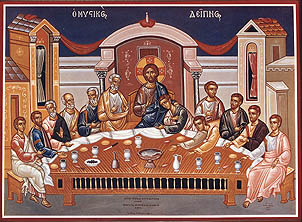

Dear Theophilus,
Recently I sat with a small group of colleagues trying to figure out how to best serve the needs of the rest of the staff at our catholic high school for our upcoming Faith Awareness Day. My other colleagues kept talking about how there is an undercurrent of aggravation with the Catholic Church amongst the staff; and although I tend to keep a low profile, I had heard the rumblings and wasn’t surprised. At one point, a colleague at the table said, “I thought Vatican II was supposed to open a window from the Church to the world. Now it seems as if the window is being shut.” With hindsight, I wish I had has the courage and wisdom to ask who he thought might be shutting the window.
I add wisdom to the courage needed to answer such questions, because up until a couple of weeks ago, like most Catholics of my generation, I knew basically nothing about Vatican II. Sure, I could tell you that it was in the early 60’s (but not the exact date), and that it had been called by John XXIII, who died during the council and that it had been seen to its fulfillment by his successor, Paul VI. After the vernacular becoming the language of the liturgy, I would have been hard pressed to name any of the documents issued by Vatican II (I would have guessed at Gaudiem et Spes and Lumen Gentium – and I would have counted myself lucky).
As a part of my Year of Faith Resolutions, I’ve decided to take on getting to know the Vatican II documents better. Even if I just manage to read through them once, I would hope that it would leave me with a better understanding of them than if I had not read them at all. To this end, I picked up Vatican II – The Essential Texts with introductions from His Holiness Benedict XVI and James Carroll. I’ve only just gotten out of the introductions to begin Sacrosanctum Concilium, and I based on the introductions alone, the book has already paid for itself.

Where James Carroll gives the reader a historical look at the Second Vatican Council, Benedict XVI delves more philosophically into the council documents. The Holy Father’s introduction comes first, however, I would have preferred to have read Carroll’s historical treatment first to give me a context of Vatican II so that I could better understand Benedict XVI’s interpretation of the council texts. Not only does Carroll put the notion of Vatican II into its historical context with the backdrop of the Holocaust and Hiroshima
As I noted, Benedict XVI’s introduction to the Vatican II texts is much more philosophical, a way to make the documents of half a century ago relevant today. Time and again, throughout his introduction, the Holy Father alludes to, or outright tells us, that Vatican II had no intentions of changing Church doctrine, but rather the way in which Church doctrine is taught in order to make it more comprehensible to the modern world: “… the Council wishes ‘to transmit the doctrine, pure and integral, without any attenuation or distortion.’” Unfortunately, it seems that many people, especially Catholics trying to reconcile their faith to the pressures of the modern world, have understood Vatican II to mean quite the opposite – that doctrine must be changed so we can comfortably remain within the visible traditions of the Church.

Keeping this misunderstanding that Vatican II was designed to change doctrine and not the modicum of teaching, it was very refreshing, from an orthodox point of view, to listen to the homily given on October 26, 2012 by Cardinal Collins, Archbishop of Toronto, to about 1,000 catholic educators. I imagine that his Eminence ruffled a few feathers when he stated: “I’ve been told that up to 85% of Catholics today do not agree with many of the Church’s social teachings. Pause. And I tell them, yes, that is true. But it doesn’t make it right or wise. It is easy to go along with the flow as it is presented in the mainstream media. However, sometimes we need to go against the flow. It might not be easy, but it is right and wise.”
This is our challenge as Catholics in a very anti-catholic world. We are challenged to go against the flow because it is right and wise – but not necessarily easy. And when our opponents throw the window of Vatican II in our faces, we need to have the courage and wisdom to ask them who is closing the window before opening the door to light and truth and inviting them to enter.



